Hey everyone, Danny from TFG Radio here, and today, I want to give a review of the newly released Kill Team 2021. As I’ve rambled about before, I have played Kill Team for a long time, and it is has been one of the best gateways into 40K from my experience, so I have been waiting for this new version with baited breath. Let’s jump into it.
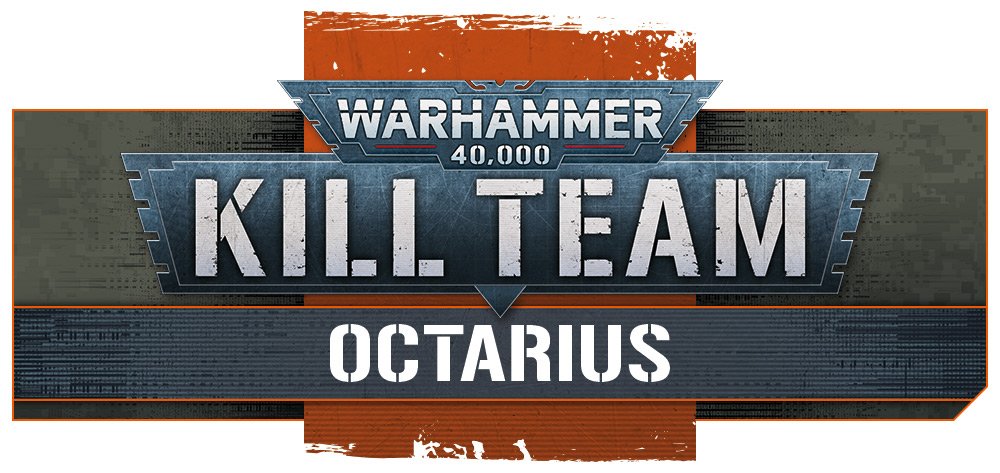
First, worth noting that I don’t play Kill Team competitively. I mostly play it as a casual game with my friends who don’t play 40K, not because they don’t want to, but usually because they don’t have the time or resources to jump feet first into it. Thus, Kill Team becomes their entry point, and it lets us share a hobby that has a generally low barrier of entry.

The basics of Kill Team aren’t too unfamiliar with anyone that has played a GW game or really any tabletop miniatures game. Each model has a stat line based on the standard practice of roll a d6, see what happens, generally more dice is good, with a set amount of damage that can be taken. The new Action Point (AP) system helps make certain classes of models more dynamic and true to the lore such as Space Marines being able to do more in a small time frame than say a Guardsmen or an Ork.
The system still uses the Ballistic/Weapon Skill that is GW’s bread and butter, and the save mechanic is there but changed in pretty meaningful ways. Instead of taking a save against any successful hit (there is no To Wound mechanic here), you only roll as many dice as your Defense stat, so if you get hit 5 times by a ranged attack, and your Defense stat is 3, which seems pretty average, you are guaranteed to take damage from 2 hits, which depending on the weapon, could be enough to just instagib a model. It also worth noting that Defense and Saves don’t mean anything in melee, only the number of attacks that you can make in melee matter there.
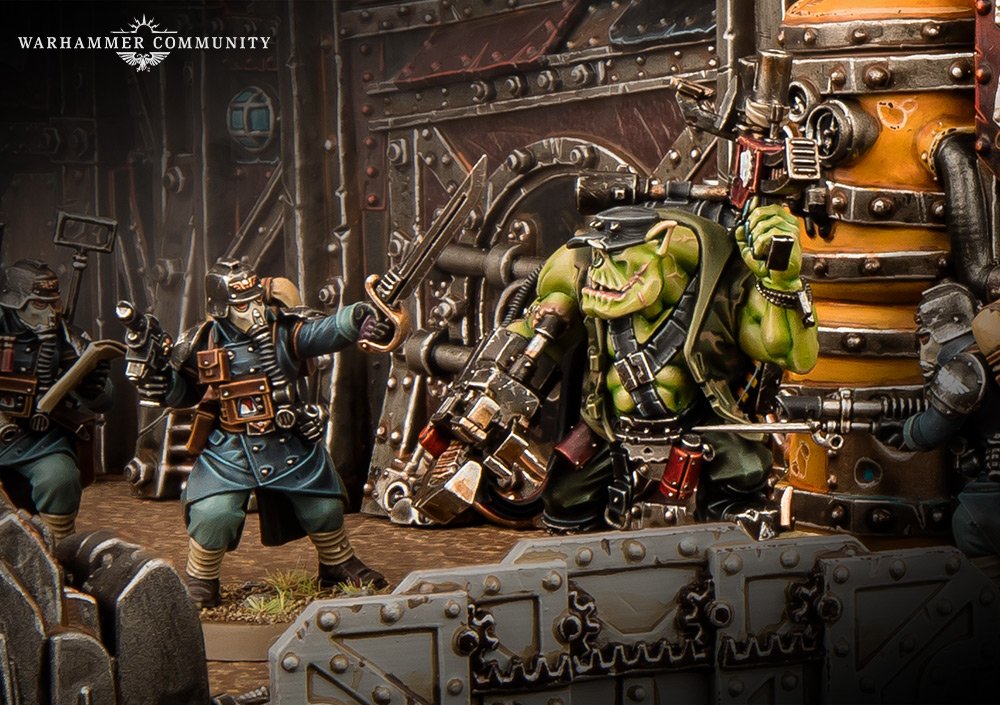
In melee, both players roll their attacks simultaneously, and starting with the attacking player, they choose a single die roll that is a Hit or Critical, and either apply it as a successful Hit against the target or as a Parry, negating an enemy hit. The defending player then chooses one of their die, and back and forth until there are no dice left to use on either side. What this really boils down to is that models with a lot of melee attacks are more likely to survive melee in a meaningful way as between a better WS that allows for more successful rolls and more attacks to be able to both negate hits against themselves and do damage to the target, they can actually kill the target without dying in the process. This also means though that a lower value model can kill a higher value one by choosing to put everything into Hits and accepting that it will not be able to defend itself. I like this change quite a bit, and if you have access to fighty models that are expendable, you can make melee punishing for more elite forces.
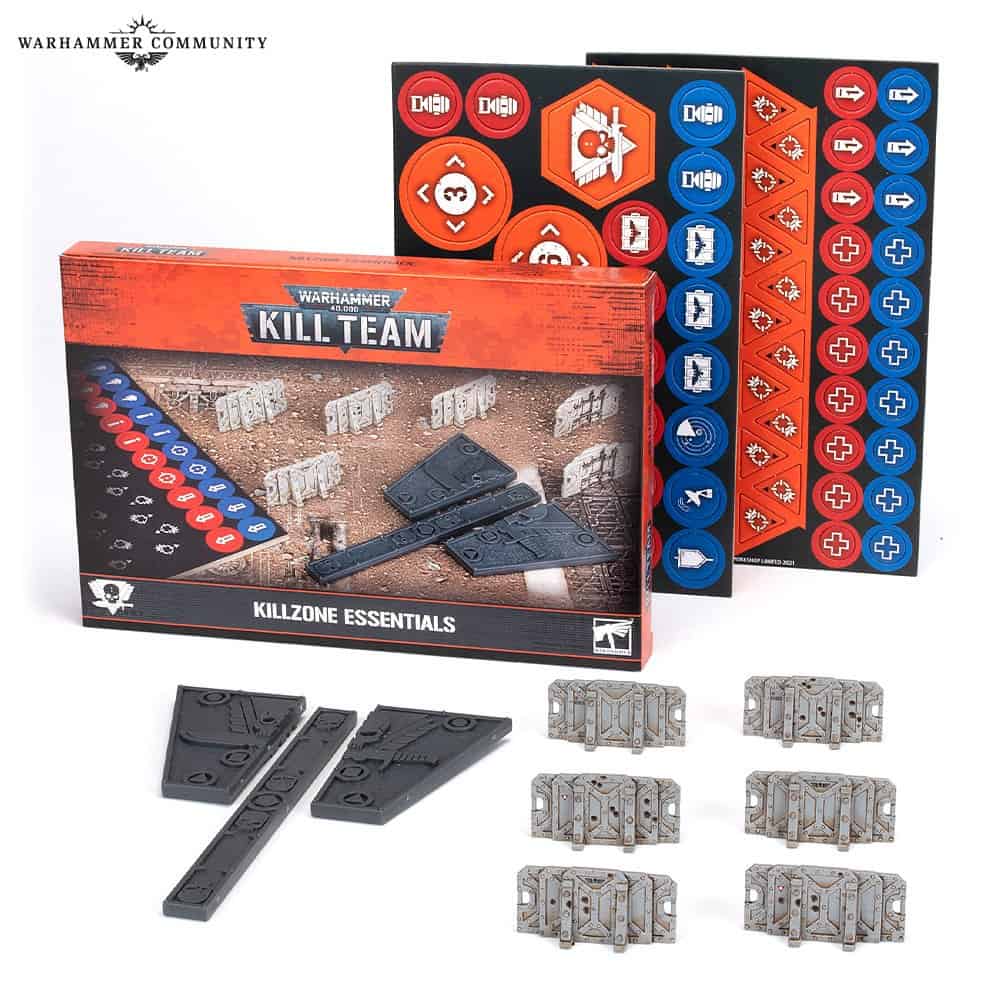
The biggest change that caused a bit of a stir is the pictographic movement stat where instead of ranges being measured in inches, they are measured in symbols, namely a Triangle for 1 inch, Circle for 2, Square for 3, and a Pentagon for 6. So a model’s movement stat is often expressed as 3Circle rather than 6 inches. This definitely takes some getting used to as reading the rules can get tripped up by the constant referencing to symbols rather than specific measurement. The widgets included in the Octarius Box (or for purchase separately) do you have the symbols on the corresponding side, and when doing my first few passes through the rules, it really helped to have one with me for quick reference.
Having used widgets like this before in other games like Marvel Crisis Protocol, X-Wing, and Warmachine (where specific measurements were vital, so a widget really helped), I am not thrown off by it, but again, the change to how ranges are expressed in the rules takes a bit to feel natural as this is such a deviation. That said, I can see the logic of it, especially in Movement where a model can break up their movement but must move in a straight line in any increment and any movement is rounded up to 1, so if you can move 3Circle, you can actually make up to 6 1” movements. This lets you navigate around terrain and such but has a certain precision to it.
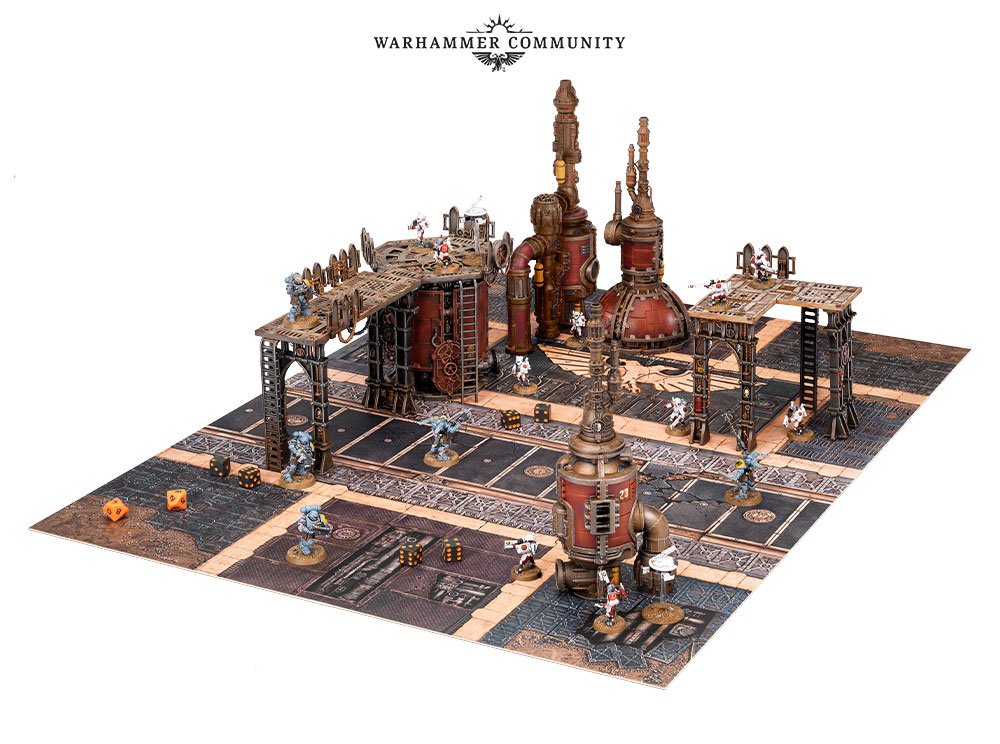
Moving around the board is essential for the missions but also to navigate terrain. Seeing as terrain is essential to a good game of Kill Team, there are some relatively robust terrain rules, but again, with the way range is measured by symbols, it can take a bit getting used to. The main crux is that if you are more than 2 inches (Circle) away from an Obscuring Terrain feature, you cannot be seen from the other side of it unless the shooter is within 1 inch (Triangle) of that Obscuring Terrain feature. This means that if you are trying to hide, you want to actually be a bit away from the terrain features, but if you are attacking, you want to get right up on the terrain to be able to see through it. Of course, being really close to the terrain does give you cover, which now just negates a ranged attack hit against you, which can be pretty clutch.
The last big standout, rules wise for me, is that Models now have 1 of 2 Orders that they are given at the start of their Activation (or when first set up). A model has either the Conceal or Engage order, and which models in your team are going to Engage or Conceal changes a lot what they can do. For instance, a model that has the Conceal order cannot Shoot, but it is also much harder to target. As long as a model has the Conceal order and is in Cover, it cannot be shot at unless the attacker is within 2 inches of it. A model with Engage has no real restrictions on what Actions they can take, but they are far easier to see through terrain and such. This creates a lot more tactical depth as it is much easier to traverse the board free of ranged attacks, but you also cannot actively engage much at all. It also makes Terrain a bit more important as there is a special designation called Vantage Point where a model on a higher level can target models with the Conceal order whereas another model on lower ground could not. This means that getting snipers into the high ground is not just cinematically awesome, it is actually essential. While a Concealed model cannot attack, it can still perform certain mission critical actions, so if you want to stop that model carrying away a piece of intel, you need to either get close or have a sniper or two in a good position.
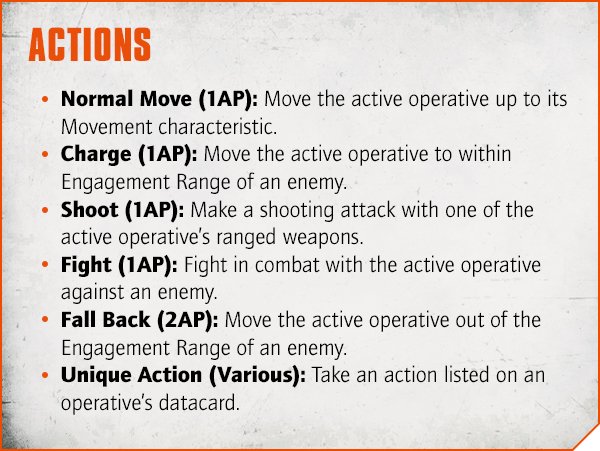
The Matched Play missions are interesting, namely the pre-game steps. The small Barricades that come with the Octarius boxset don’t seem like much until you see that as part of the pre-game, once you have your Drop Zone (deployment zone), you get to set up 2 Barricades, which helps ensure that you have some good coverage in your own zone. The first turn is also determined by Scouting, one of three choices you can make in terms of getting another free Barricade, being able to change an Order for free in the first turn (Turning Point), or a free Dash action with a model. Who goes first and how that is explained isn’t really ideal, but once you get it, it’s fine and makes sense, but it definitely isn’t worded in the most accessible way.
Tac Ops are essentially secondaries, and they are an interesting mix of being strategic and tactical. What does that mean? Strategically, you build your own deck of Tac Ops by selecting 6 cards. This gives you a lot of control over how you build your Kill Team and how you want to essentially play in any game. You draw 2 Tac Ops at a time, keep one, and discard the other, so you are only getting 3 of them per game, so you also have to be flexible as you cannot guarantee which 3 you are going to have, so there’s that tactical element of having to make decisions based on the shifting variables of the game.
If you don’t like the whole “painting scores points” thing in Matched play, well, there it is. A Matched Play mission is a max of 20 points, 12 from Primary, 6 from Tac Ops, and 2 from Painted. I actually like this breakdown as it means that the most important part of the game is the mission objective, and while secondaries are going to absolutely matter in close games, you cannot abandon the primary mission to play the game that your Tac Ops is designed to do, which cuts down on non-interactive strategies, which isn’t that much fun to play.
So what do I like?
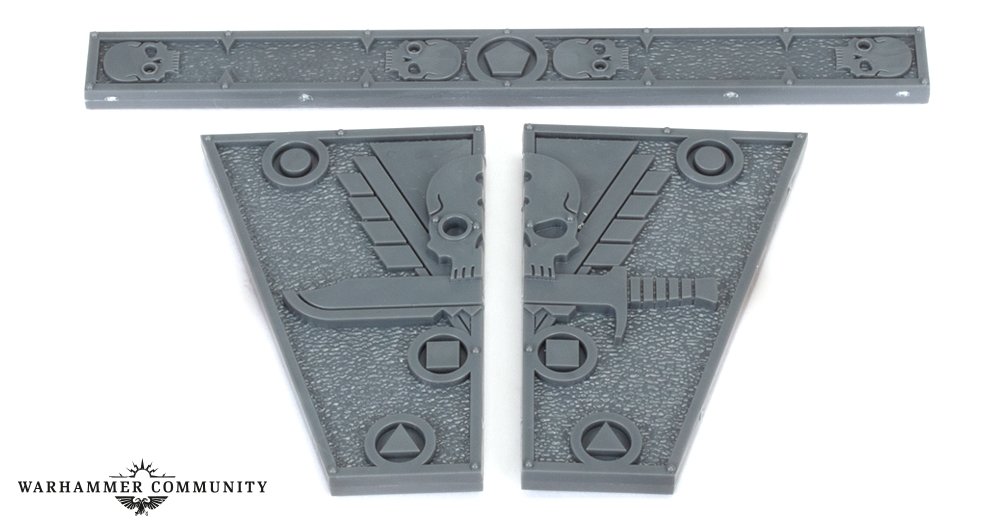
I really like the change to melee. It is bloody, high risk, high reward, and in general, it feels very cinematic. It also means that even the scariest Custode can be felled by an Ork with gumption (and a death wish).
I like the restrictions on Actions a lot. You cannot Move and Charge in the same turn, so for models with a lot of Action Points, it cuts down on the number of action combinations like a Custode shooting, moving, charging, and fighting.
The Order system is great and it adds a lot of depth to the game where some units are essentially running dark while others are out and loud.
What isn’t hitting for me?
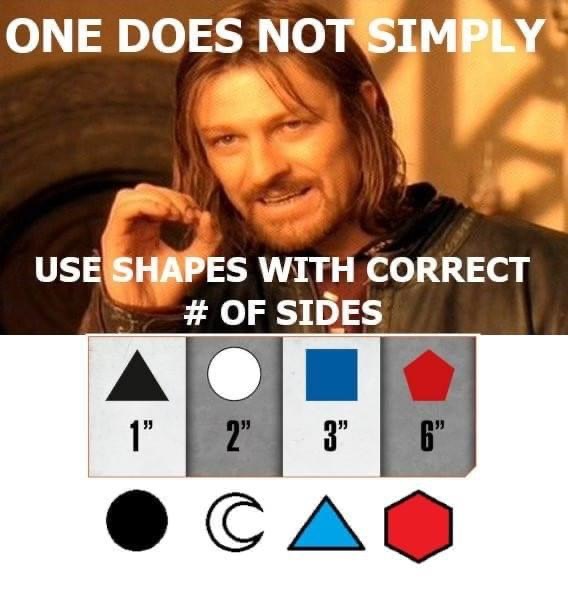
The measurement system, visually, just doesn’t work that well. There isn’t a clear, logical reason why a Black Triangle means 1 inch, why a White Circle means 2 inches, a Blue Square means 3 inches, and a Red Pentagon means 6 inches. The color and shape correlation doesn’t have any clear reasoning behind it, so it really comes down to rote memorization. That said, I think if you take the time to memorize, it’ll work just fine once you get used to that, and it also helps to get the widget and actually paint the symbols their corresponding color. At least they avoided putting both Red and Green in the color tree as that would only compound issues for most of those that have color-differentiation issues.
The Tac-ops seem unbalanced. Some are relatively easy to do like Execution, which is just getting more kills than your opponent, which for certain factions is not that hard, especially with the Conceal/Engage mechanic. Others, like Challenge, are really easy to counter and will likely not get much use. This will take playing and sending feedback much in the same way that the Secondaries in 40K needed some adjustment (and still do in some ways).
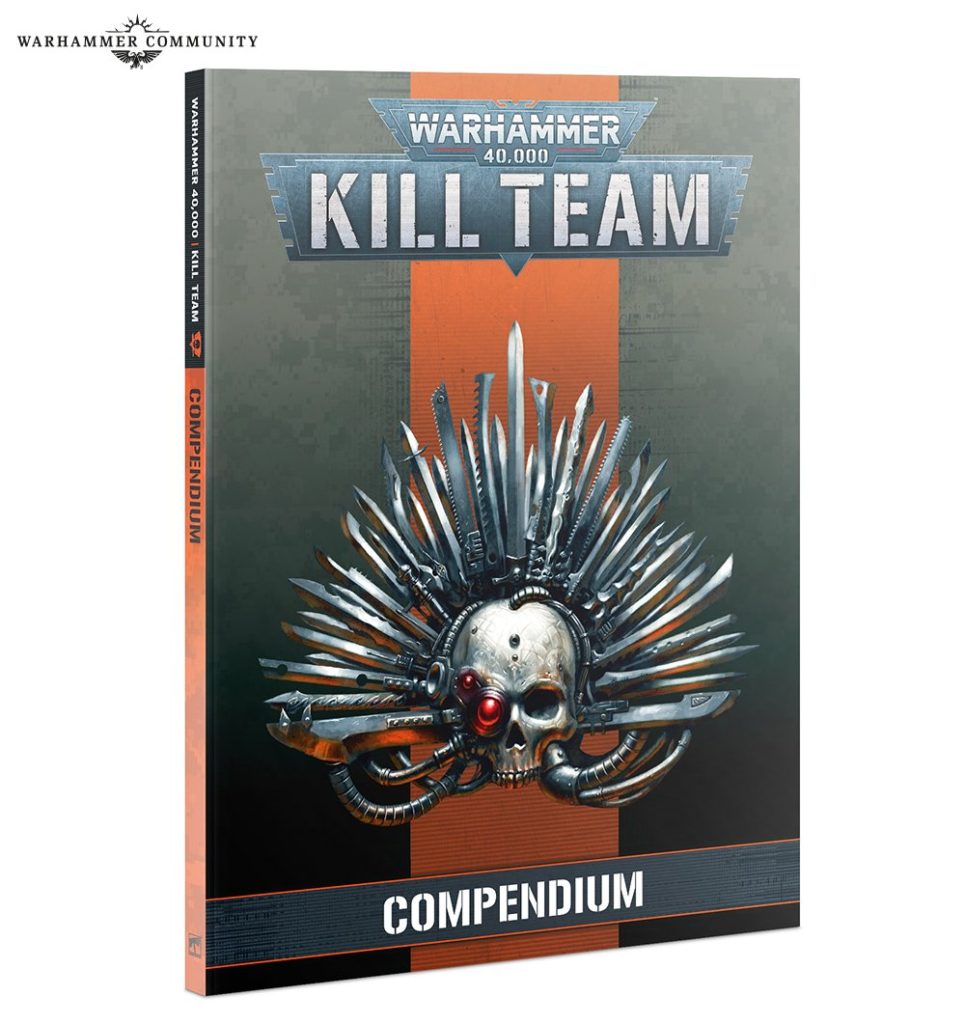
The total information in the book actually isn’t that awesome. You get some lore, you get some pretty pictures of models, and you get rules, but you don’t get much else. It would have been nice to have at least some faction information, so you don’t need the Compendium to actually play if you already have a faction. If you bought the Octarius box, then you have all that info for the Krieg and Orks, but it does have a bit of feelz bad for someone who already played Kill Team with other factions.
Speaking of the Compendium, I don’t have it yet in my hand, so I am not going to comment other than that what I have seen isn’t super promising. I’ll probably have a separate review of that later.
Overall:
The new edition of Kill Team is certainly that, new. It is a big engine change, but the actual machine of it seems pretty workable. I am excited to get some games in with my usual crew, but then, I am also a little anxious because teaching the game will take a bit more time than before. I am already starting to think of what questions about ranges and such that I will need to answer. I do think the actual game system here is sound with a real difference in how shooting and melee work and pretty decent terrain rules that make tactically traversing the board far more important than anything else.
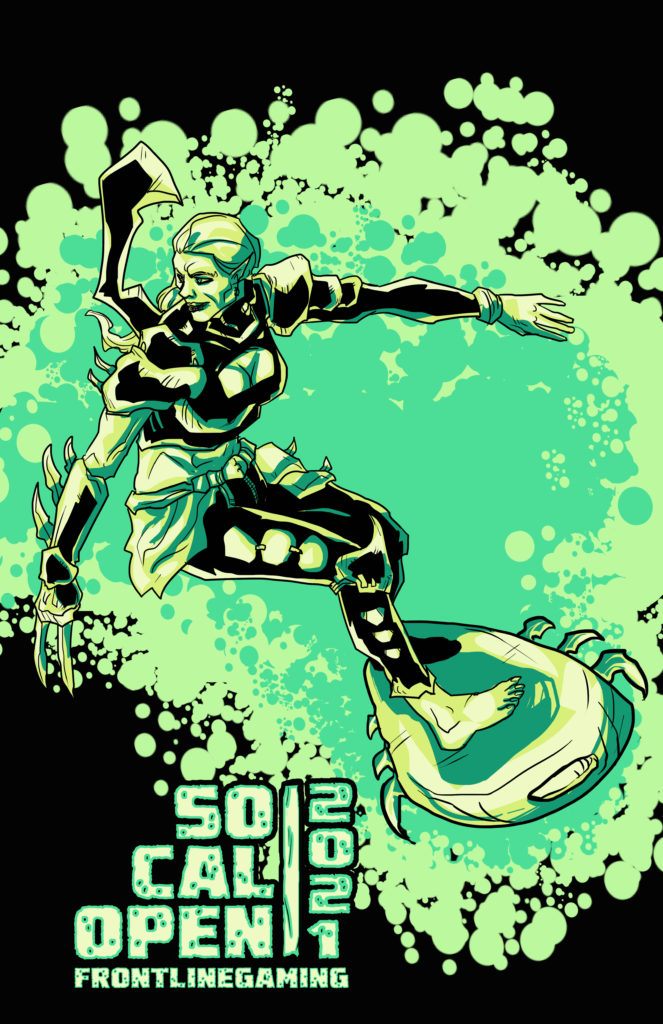
Thanks as always for reading, and as always, play games and be nice to each other. Oh, and don’t forget, SoCal Open isn’t too far away, so if you want to throw down in Kill Team, that’s a good place to go.
#mc_embed_signup{background:#fff; clear:left; font:14px Helvetica,Arial,sans-serif; } /* Add your own Mailchimp form style overrides in your site stylesheet or in this style block. We recommend moving this block and the preceding CSS link to the HEAD of your HTML file. */And remember, Frontline Gaming sells gaming products at a discount, every day in their webcart!



